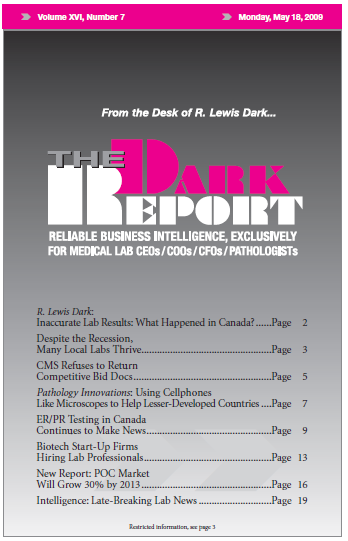LAB PROFESSIONALS WHO HAVE worked in regions like Africa know that the infrastructure in developing countries is limited or nonexistent. This makes it challenging to provide clinical laboratory testing services that are up to the standards common in developed countries. For example, it can be difficult for a laboratory in a developing country to report …
Using Cellphones Like Microscopes To Help Lesser-Developed Countries Read More »
To access this post, you must purchase The Dark Report.


